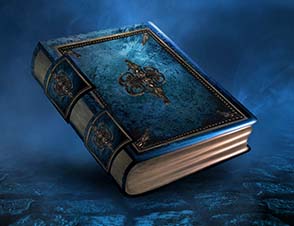Search Content
From Right Field: Big Bottom (Smell the Glove Even More, Part III)
Chris wraps up his quest for a winning Mono-Black Control deck in Standard.
SCG Daily – The Kid’s Perspective: It’s Tricky
Today, I’ll talk about an unorthodox method of turning a game around in your favor. Often referred to as Jedi Mind Tricks or bluffs, this is the kind of thing that separates the good plays from the masterful ones, and will always produce a good story. First, I’ll show you a situation from an old Standard format in which a bluff could be justified…
Blinded by the Glare
StarCityGames.com is delighted to welcome freshly-crowned Player of the Year Kenji Tsumura to the writing staff. Today Kenji gives you the Japanese perspective on the deck that stormed Worlds and walked away with a World Championship title for his teammate Katsuhiro Mori.
StarCityGames.com. The best writers. The best players. The best Magic.
Deck Fundamentals: Picking the Right Deck
Mike Flores has never been more on top of his game as a deck designer. For the last two years he has produced deck after deck that has turned in great results for Pros and PTQ players alike. In the tradition of Mike’s legendary “Building Broken Decks” series, today Master Flores delivers the first installment in a new series where he reveals to you the secrets of his success.
SCG Daily – Diary of a Magic Player: My First Pro Tour
Yesterday, I told tale of my Second Grand Prix. I placed fourth, winning the allotted prize for my finish plus the cash bonanza that accompanies the title of Highest Placed Amateur. My Constructed ranking gained almost 300 points overnight and I was able to treat my friends in Team Leeds to a slap-up Chinese meal. But most importantly… I was qualified for the Pro Tour!
Constructing Coldsnap
It’s rare that a submissionist comes along who writes well enough to make us promote them after only a couple of articles, but that’s exactly what happened last week with Kelly Digges. Check out the funniest new writer on the site as he tackles the truth and the lies behind Coldsnap.
Stax Dissected
From July through October, Stax did pretty well in Vintage. Not only was it the most predominant deck in Top 8s, it was by far the most successful. Although Stax was only a fifth of Top 8s, it comprised 40% of all tournament winning decks. Therefore, I decided it was time to dissect this archetype and see just what makes them tick.
Peace of Mind: Again With the Mole
When I left off two articles ago, I had thrown together an Extended deck predicated on disruption. Despite the fact it had little or no testing, I wanted to create a starting point. Sure enough, it was – but it’s far from an end point. Today I’ll take what we started with, test it, tweak it, and see if we can end up with something good and quite rogue.
SCG Daily – Diary of a Magic Player: My First Second Grand Prix
My first Grand Prix, GP: London 2001, was fun. At least, I think it was. I can’t remember a single thing about it. According to the DCI, I went 2-4, or something. Nothing special happened, or I’m sure I’d remember. My second Grand Prix, however, saw fireworks.
Friggin’ Deck
Mike went 5-0-2 in the swiss of his most recent PTQ with… well, isn’t it obvious? A full PTQ report with matchups plus a Flores-approved decklist for what is suddenly the hottest deck on the planet. Confused? Click the friggin’ link.
SCG Daily – Diary of a Magic Player: My First Tournament
Yesterday, I spoke of my first Magic match. While it wasn’t at a tournament, and thus it never counted as a true competitive contest, it was my first series of games against a tournament-savvy opponent.
Cak’s Eye View – Worlds 2005
I was determined to break the streak. I hadn’t made money in a Magic tournament since Grand Prix: Chicago aside from appearance fees (I even had to look it up because I couldn’t remember the last time I made money). Worlds was a chance to make a difference, because if I didn’t, I was done.
Ichorid, The Blood-soaked Soul Kiss
The creator of Extended’s hottest new deck takes but a moment to bask in the glory of his elevation from scrub to cool kid on the block before going right back to telling you exactly what is on his mind.
SCG Daily – Diary of a Magic Player: My First Match
Yesterday, I told you of my first forays into the Realms of Magic. Simple games played with my friend Sene, cards dealt on the living-room rug in front of a two-bar electric fire. Drinking Dr Pepper, laughing, and swinging with Vizzerdrix. That was how I learnt to play Magic.
Today, I’ll tell you how I learnt to play Magic.

